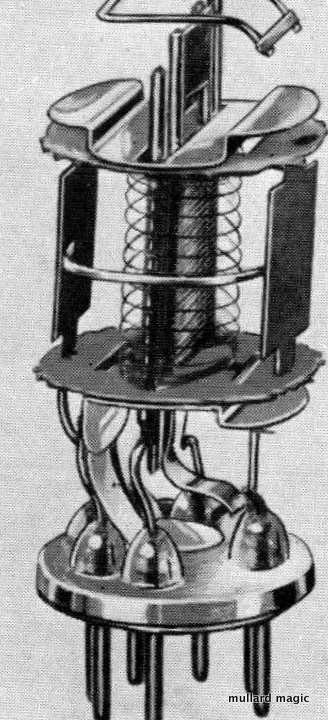THE GREAT MULLARD MAGIC BLOG

VALVE TYPES & MANUFACTURING TECHNIQUES (viii) -...
Previously, we looked at wire production and although this is used for numerous valve componentry preparation, the biggest use by length has to be filaments so, today, we are going...
VALVE TYPES & MANUFACTURING TECHNIQUES (viii) -...
Previously, we looked at wire production and although this is used for numerous valve componentry preparation, the biggest use by length has to be filaments so, today, we are going...

WHAT'S INSIDE A VALVE (ix)
Today, I would like to raise the topic of SCREENS. As we discussed last time, internal carbonising only decreases the risk of secondary emission but cannot prevent this unwanted electron...
WHAT'S INSIDE A VALVE (ix)
Today, I would like to raise the topic of SCREENS. As we discussed last time, internal carbonising only decreases the risk of secondary emission but cannot prevent this unwanted electron...
